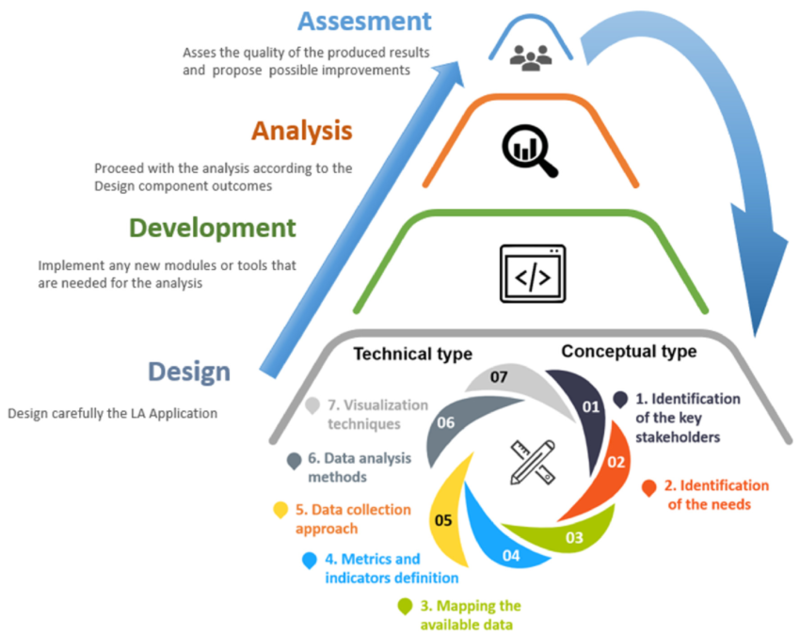Assessment for Learning MOOC’s Updates
Applying learning analytics in online environments
Prior to the emergence of Big Data and technologies such as Learning Analytics (LA), classroom research focused mainly on measuring learning outcomes of a small sample through tests. Research on online environments shows that learners’ engagement is a critical precondition for successful learning and lack of engagement is associated with failure and dropout. LA helps instructors to track, measure and visualize students’ online behavior and use such digital traces to improve instruction and provide individualized support, i.e., feedback.
Data-driven Decision-Making (DDDM) requires the instructors to actively adapt their instruction to evidence gathered in multiple-format from multiple sources. Digital environments such as LMS and MOOCs generate a large amount of data- Big Data- about students’ learning, performance and engagement activities called ‘digital traces’. Since students’ engagement is reported to be positively associated with learning and productivity, Learning Analytics (LA) can be used to collect and analyze these digital traces to track, measure and visualize students’ engagement patterns with materials/content, instructors, and peers in real time (during the learning process).
The advent of digital or virtual learning environment (VLE), such as Learning Management Systems (i.e,Moodle or Blackboard), Massive Open Online Courses (MOOCs), Open Course Ware (OCW), learning applications, Intelligent Tutoring Systems (ITS), E-book portals, online games, simulations, social networks (i.e., YouTube, Twitter), Open Educational Resources (OER), as well as wearables, sensors, Internet of the Things (IoT), not only provide the users with advantages such as openness, flexibility, autonomy, accessibility, and collaboration, they also led to the exponential growth of big data: large, heterogeneous, multi-modal, multi-sources educational data.
One research examined different aspects of students’ engagement, i.e., course access, course navigation, number of recorded lectures watched, discussion, or completed assignments. It focused on the “frequency of involvement”: how many times video lectures are downloaded, embedded questions answered, exams/quizzes submitted, thread views/opened, posts/comments written in the discussion forums, etc. Below, I summarize some engagement indicators:
- log data
- frequency and intensity of access to LMS
- mouse click count
- artifacts (portfolio, essay, projects, lab reports)
- assessment data (test, exam, quiz)
- patterns in errors, mistakes, misconceptions about a particular topic/concept
- number of videos watched
- video-watching frequency and duration (pause, playback, adjusted speed, embedded questions)
- page turning/jumping
- discussion forums (viewing, posting, voting, updating)
How could these metrics or indicators be used to support teaching and learning? LA uses such metrics to examine the relationship between online engagement indicators and learning outcomes. Learning outcomes are defined as retention/completion and final grade or gain score.
Given the importance that existing literature attach to students’ engagement and the negative consequence of disengagement (i.e., higher dropout, failure, decreased intrinsic motivation), this study explored how LA can be used to continually and formatively track digital traces of engagement through interaction data, i.e., time-stamped logs. Traditionally, “perceived engagement” was measured through self-reported scales, interview or teacher observation. LA can extract objective engagement features automatically, unobtrusively (without interrupting learning) and ubiquitously. Such data can be used in predicting dropout and failure, giving early warnings to teachers about students who are struggling or losing interest, and support timely teachers’ appropriate intervention.
Reference: https://www.frontiersin.org/articles/10.3389/feduc.2022.840947/full


